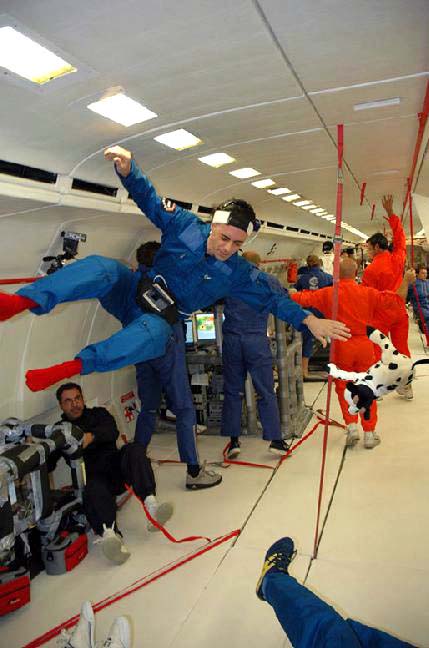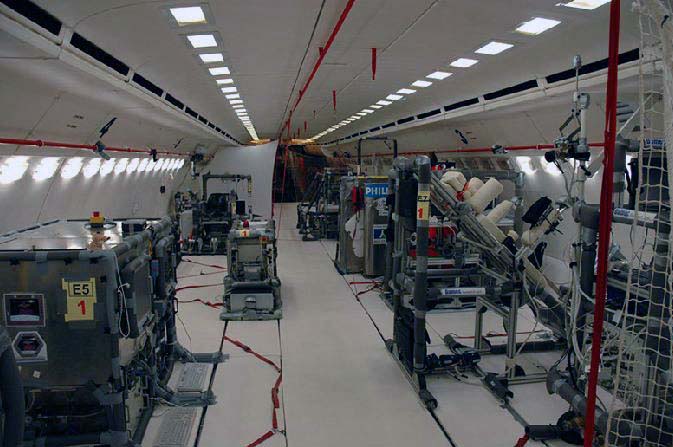 A series of parabolic flight experiments were performed in conjunction with HAL to study changes in head-eye coordination during simulated 0-g. These experiments were carried out on the the European Space Agency (ESA) parabolic flight campaign (six flights) in March and October 2005. The flights took place on an Airbus A300 based in Bordeaux, France. Each flight lasted around 3 hours, in which 30 parabolas were performed.
A series of parabolic flight experiments were performed in conjunction with HAL to study changes in head-eye coordination during simulated 0-g. These experiments were carried out on the the European Space Agency (ESA) parabolic flight campaign (six flights) in March and October 2005. The flights took place on an Airbus A300 based in Bordeaux, France. Each flight lasted around 3 hours, in which 30 parabolas were performed.
The parabolic sequence consisted of a hypergravity (1.8-g) phase of approximately 20 s as the aircraft accelerated upward at an angle of 45º, then a period of 23 s of weightlessness at the apex of the parabola, then a second hyper-g phase of 20 s as the aircraft pulled out of the parabola. The experimental aim was to quantify changes in head-eye coordination during the transitions from 1-g to 1.8-g and 0-g. Subjects were seated and securely strapped a chair, facing a large white screen onto which laser-projected targets appeared in a random sequence. Subjects were asked to continuously fixate on the targets over the course of 15 parabolas, and head and eye movements were recorded.
Preliminary results indicate that sensorimotor dysfunction is not a result of sudden changes in gravity level (from 1-g to 1.8-g to 0-g); this suggests that post-flight neurological impairment in astronauts is due to long-term exposure to microgravity rather than the sudden transition from 0-g to 1-g when returning to Earth.
Contact person for this study: Dr Hamish MacDougall

